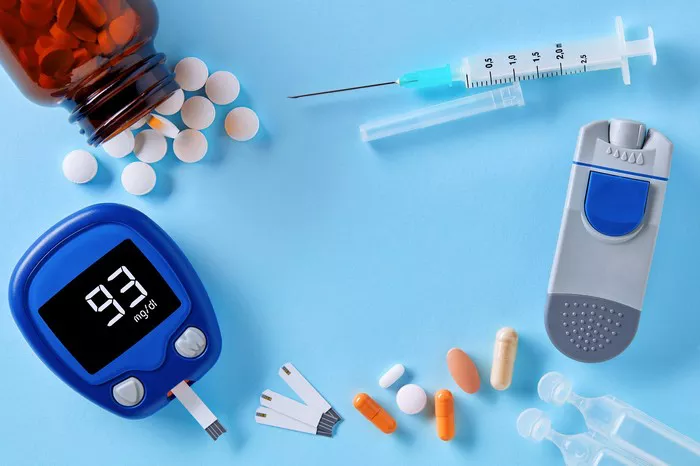In the realm of healthcare, terms like “blood sugar” and “blood pressure” are commonly used, yet they represent distinct physiological parameters with unique implications for health and disease. While both are vital indicators of cardiovascular health, they serve different functions and require distinct management strategies. In this comprehensive article, we delve into the fundamental differences between blood sugar and blood pressure, their significance in health and disease, and how understanding these parameters can empower individuals to take control of their well-being.
1. Blood Sugar:
Blood sugar, also known as blood glucose, refers to the concentration of glucose (sugar) present in the bloodstream at a given time. Glucose serves as the primary source of energy for cells throughout the body and is derived from the digestion and breakdown of carbohydrates consumed in the diet. The regulation of blood sugar levels is tightly controlled by various hormones, primarily insulin and glucagon, which are produced by the pancreas.
2. Blood Pressure:
Blood pressure is the force exerted by circulating blood against the walls of blood vessels, primarily arteries, as the heart pumps blood throughout the body. It consists of two components: systolic pressure, representing the pressure exerted during heartbeats when the heart contracts, and diastolic pressure, representing the pressure between heartbeats when the heart relaxes. Blood pressure is measured in millimeters of mercury (mmHg) and provides valuable insights into cardiovascular health and circulation.
3. Key Differences:
While both blood sugar and blood pressure are important indicators of cardiovascular health, they represent distinct physiological parameters with unique implications:
- Physiological Role: Blood sugar levels reflect the availability of glucose in the bloodstream for cellular energy metabolism, whereas blood pressure reflects the force exerted by circulating blood against the walls of blood vessels during cardiac cycles.
- Regulation: Blood sugar levels are regulated by hormonal mechanisms, primarily insulin and glucagon, which help maintain glucose homeostasis. Blood pressure is regulated by various physiological mechanisms, including cardiac output, peripheral vascular resistance, and autonomic nervous system activity.
- Measurement: Blood sugar levels are typically measured in milligrams per deciliter (mg/dL) or millimoles per liter (mmol/L) using a glucose meter and fingerstick blood samples. Blood pressure is measured in millimeters of mercury (mmHg) using a sphygmomanometer and auscultation or oscillometry techniques.
- Normal Ranges: Normal blood sugar levels typically range from 70 to 99 mg/dL (3.9 to 5.5 mmol/L) in fasting individuals and may vary slightly depending on the timing of measurements and individual factors. Normal blood pressure is defined as systolic pressure less than 120 mmHg and diastolic pressure less than 80 mmHg, with values exceeding these thresholds indicating elevated blood pressure (hypertension).
4. Significance in Health and Disease:
Both blood sugar and blood pressure play crucial roles in maintaining overall health and well-being, and abnormalities in these parameters can have significant implications for health and disease:
- Blood Sugar: Abnormalities in blood sugar levels, such as hyperglycemia (elevated blood sugar) or hypoglycemia (low blood sugar), are hallmark features of diabetes mellitus, a chronic metabolic disorder characterized by impaired glucose regulation. Hyperglycemia can lead to complications such as cardiovascular disease, neuropathy, nephropathy, and retinopathy, while hypoglycemia can result in symptoms such as confusion, dizziness, sweating, and loss of consciousness.
- Blood Pressure: Abnormalities in blood pressure, particularly hypertension (elevated blood pressure), are significant risk factors for cardiovascular disease, including coronary artery disease, stroke, heart failure, and peripheral vascular disease. Hypertension can lead to damage and narrowing of blood vessels, increased workload on the heart, and impaired organ function if left untreated. Conversely, hypotension (low blood pressure) may cause symptoms such as dizziness, lightheadedness, and fainting due to inadequate tissue perfusion.
5. Management Strategies:
Effective management of blood sugar and blood pressure requires a comprehensive approach that incorporates lifestyle modifications, medication therapy, regular monitoring, and ongoing education and support:
- Blood Sugar Management: For individuals with diabetes, blood sugar management involves maintaining blood glucose levels within target ranges through dietary modifications, physical activity, medication adherence, and self-monitoring of blood glucose levels. Treatment regimens may include insulin therapy, oral antidiabetic medications, and adjunctive therapies to optimize glycemic control and prevent complications.
- Blood Pressure Management: Management of elevated blood pressure typically involves lifestyle modifications, such as adopting a heart-healthy diet (e.g., DASH diet), engaging in regular physical activity, maintaining a healthy weight, limiting sodium intake, moderating alcohol consumption, and avoiding tobacco use. In some cases, antihypertensive medications may be prescribed to lower blood pressure and reduce the risk of cardiovascular events.
6. Conclusion:
In conclusion, while blood sugar and blood pressure are both essential indicators of cardiovascular health, they represent distinct physiological parameters with unique implications for health and disease. Understanding the differences between blood sugar and blood pressure, their significance in health and disease, and effective management strategies empowers individuals to take control of their cardiovascular health and reduce the risk of complications associated with abnormalities in these parameters. By adopting healthy lifestyle habits, adhering to treatment regimens, and seeking regular medical care, individuals can optimize their blood sugar and blood pressure levels and improve their overall health and well-being.
























